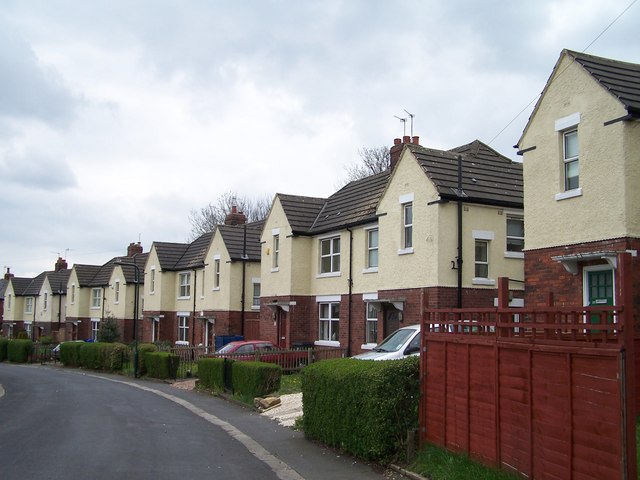The latest research by Birmingham and Newcastle-based property developer, StripeHomes, has examined where in England buy-to-let landlords can achieve the best rent yields, discovering that the North provides the most valuable investment opportunities. The buy-to-let industry has endured some tough times in the last couple of years. Not only has COVID-19 profoundly affected the reliability of rental income, but changes to regulations and tax rules have also made it more difficult for landlords to maintain a good level of profit from their investments. Proposed changes to Capital Gains Tax allowances were threatening to make the situation even harder, but now that this has been put on the backburner, landlords can finally start looking forward and thinking about how best to grow their rental portfolios. When doing so, rent yields are the most important statistic to examine, so StripeHomes has analysed all of the available data to provide a list of England’s best locations for high-yield buy-to-let returns. By Region On a broad regional level, the best buy-to-let yields can be found in the North East. Of course, the North East region is huge and so research when investing should always be undertaken at a more granular level. However, the region as a whole is currently home to an average house price of £144,032 and an average rent value of £566 per month, the rental yield is 4.7%, well above the national average of 3.9%. Second on the list is Yorkshire & Humber, where the average house price is £179,408 and the average rent is £631 per month, delivering a good yield of 4.2%. The third-most profitable buy-to-let region is the North West with an average yield of 4.2%, followed by London – the first location not found in England’s North – where high house prices are matched by high rent values to create a yield of just under 4%. Rounding off the top five is the West Midlands, where an average house price of £216,973 meets an average rent value of £697 per month to create a yield of 3.9%. By Local Authority This yield analysis can also be narrowed down to examine individual towns and cities, which shows that the very best rental yields for buy-to-let landlords in England are found in Newcastle-upon-Tyne. With an average house price of £177,821 and average monthly rent of £844, the city offers an average yield of 5.7%. Blackpool is close behind with an average house price of £116,939 and an average rent of £540 per month creating a yield of 5.5%. Stoke-on-Trent also boasts yields of 5.5%, while Burnley in Lancashire and Knowsley in Merseyside both offer yields of 5.4%. It’s clear from this data that the best rent yields in England are currently found in the North, demonstrated by the fact that 16 of the country’s top 20 yield locations are found north of Nottingham. Managing Director of StripeHomes, James Forrester, commented: “It’s great to see a number of areas presenting strong yields to buy-to-let investors despite the government’s best efforts to reduce profit margins in an attempt to disincentivise landlords and free up housing stock for general homebuyers. As the backbone of the rental market, the buy-to-let sector plays an incredibly important role in providing many with a place to live, but we simply can’t expect the nation’s landlords to provide this service at a loss. However, the year ahead looks positive and with travel restrictions lifting, a return to face to face teaching at universities as well as a return to the physical workplace, increasing demand should help boost many areas of the market.” Table shows the current average yield in each region of England Location AveHP – April 2021 Average rent pm – March 2021 Rental yield North East £144,032 £566 4.72% Yorkshire and The Humber £179,408 £631 4.22% North West £183,299 £636 4.16% London £491,687 £1,623 3.96% West Midlands Region £216,973 £697 3.85% East Midlands £213,308 £660 3.71% South West £279,951 £840 3.60% South East £341,358 £999 3.51% East of England £313,964 £889 3.40% England £268,380 £864 3.86% Sources Gov.uk – UK House Price Index Office for National Statistics – Private Rental Market Summary Table shows the areas of England with the highest average rental yield at present Location AveHP – April 2021 Average rent pm – March 2021 Rental yield Newcastle upon Tyne £177,821 £844 5.70% Blackpool £116,939 £540 5.54% Stoke-on-Trent £120,043 £547 5.47% Burnley £105,618 £477 5.42% Knowsley £142,030 £641 5.42% Hyndburn £107,148 £482 5.40% Sunderland £126,520 £541 5.13% County Durham £117,576 £502 5.12% Barrow-in-Furness £131,544 £560 5.11% Salford £182,091 £770 5.07% Manchester £203,169 £838 4.95% Pendle £120,840 £498 4.95% Newham £382,016 £1,536 4.82% Blackburn with Darwen £127,154 £511 4.82% City of Nottingham £172,540 £682 4.74% Preston £143,743 £568 4.74% Barking and Dagenham £312,288 £1,226 4.71% Middlesbrough £125,115 £490 4.70% Stockton-on-Tees £146,819 £573 4.68% City of Bristol £306,482 £1,196 4.68% Sources Gov.uk – UK House Price Index Office for National Statistics – Private Rental Market Summary








